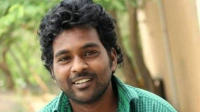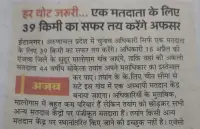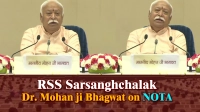Key Takeaways from the Ayodhya Verdict
In its 1045 pages long judgment+ by the 5 judges bench+ headed by Chief Justice of India, His Lordship Mr Ranjan Gogoi and comprising by four other lordships viz. Justice Mr. S A Bobde , Justice Mr. D Y Chandrachud, Justice Mr. S Abdul Nazeer, and Justice Mr. Ashok Bhushan, the Constitution Bench, that was set up on January 8, 2019, heard the case for over 40 days from August to October, elivered the judgement on November 9, 2019
- The SC has ordered the Union Govt of India to set up a trust to build a temple on the Ram Janmabhoomi Site, while allotting alternative five acres of land for constructing a mosque in a suitable place in Ayodhya.
- The apex court has directed the Centre to formulate a scheme pursuant to the powers vested in it under Sections 6 and 7 of the Acquisition of Certain Area at Ayodhya Act 1993. The scheme shall envisage the setting up of a trust with a Board of Trustees or any other appropriate body under Section 6 who will undertake the construction of a Ram temple at the disputed structure site discarding the Mosque claim on that site on the ground that the Muslim sides failed to prove their title of possession there anyway.
- The SC has allotted the entire 2.77-acre disputed land to the Hindu sides for temple construction, refuting the one third sharing formula for all to Ramlalla Virajman ( Lord Ram existing in the Childhood form), the Nirmohi Akhada and the Sunni Wakf Board as settled by the Allahabad High Court earlier in 2010. The apex court clearly said that the three-way bifurcation by the High Court was legally unsustainable. Even as a matter of maintaining public peace and tranquillity, the solution which commended itself to the High Court is not feasible. The SC also said that dividing the land will not subserve the interest of either of the parties or secure a lasting sense of peace and tranquillity.
- The SC also ruled that the Nirmohi Akhara suit was not maintainable and it has no shebait rights (priestly rights). However, the court directed that in the Board of Trustees, the Nirmohi Akhara should be given fair and appropriate representation.
- The allotment of land to the Muslims is necessary because though on a balance of probabilities, the evidence in respect of the possessory claim of the Hindus to the composite whole of the disputed property stands on a better footing than the evidence adduced by the Muslims.
- The claim of Shia Waqf Board against Sunni Waqf Board to Babri Masjid was also dismissed+ by the apex court out-rightly mentioning the ‘inordinate delay of 24964 days’ to file the case by the Shia Borad in the case SLP (Civil) Diary No.22744/2017 Shia Central Board of Waqf U P…Petitioner -Versus- Sunni Central Board of Wakf …Respondent.
- The SC said that archaeological evidence cannot be brushed aside as conjecture and hypothesis. SC held that Archaeological evidence supports that the Babri Masjid was not constructed on vacant land but on a definite non-Islamic structure. However, Archaeological Survey of India findings did not say whether a particular Hindu temple was demolished to construct a mosque in 1528 by Mir Baqi, the lieutenant of Mughal ruler Babur.
- The court also said that the destruction of the mosque in 1992 happened in breach of SC orders. The desecration of the mosque by placing idols in 1949 and its demolition was contrary to the law, it added.
- The SC also recognised the Muslim invasion over the Hindu worship place by stating that the Mosque was not built on the plain land and there was an existence of un-Islamic structure beneath, but expressed inability to determine whether it was done by destructing the Rama Janmabhoomi Temple that was existing since the twelfth century.
- Besides this unanimous judgement, one of the judges also seriously attempted to clear the doubt on the Hindu faith Whether disputed structure is the holy birth place of Lord Ram as per the faith, belief and trust of the Hindus, in its 115 pages long ADDENDA in its verdict under a caption “Whether disputed structure is the holy birth place of Lord Ram as per the faith, belief and trust of the Hindus?
The Supreme Court has said that Hindus have established “a clear case of a possessory title” to the outside courtyard by virtue of “long, continued and unimpeded worship” at the Ram Chabutra and other objects of religious significance. While taking the scriptures, travelogues, archaeological evidences and legal provision, Court has maintained the uninterrupted claim of Ram Lalla Virajman over the place.
A video on the movement :
Video : Ayodhya Sri Rama Janmabhumi – Mission Turned into Movement –






Leave a comment